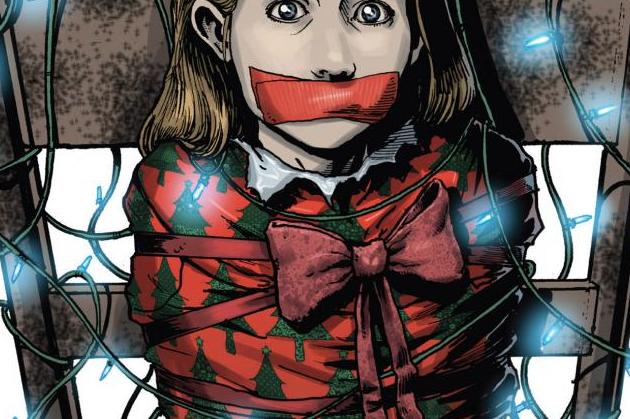Happy #4
Grant Morrison's first creator-owned book at Image ends this week with issue #4 of Happy. Arguably weaker than earlier issues, Happy rushes towards its conclusion as hit man Nick Sax tracks down a kidnapper dressed as Santa Claus in what little space he has left in his comic, but ultimately the story comes up a bit short. There's a conclusion, of sorts, but Morrison fails to properly flesh it out before leaving things open for a continuation of the story. Beyond that, Darrick Robertson's art is steeped in gritty realism and creates the perfect atmosphere for the book. Characters are detailed and almost grotesque looking, with almost all of the male characters meticulously detailed stubble, imperfections, and wounds inflicted upon them. Robertson's art, save for one colorful scene, feel muddled and cold, which is fitting as Happy is set in New York City during Christmas time and main character Nick Sax doesn't exactly have a glamorous job.
Viewed simply as a story, Happy would be a disappointment. While Morrison's writing is often times described as convoluted and off-beat, Happy is certainly a much easier read. It wasn't necessarily hard to follow in any way and is completely self-contained. The standard Morrisonian craziness you would expect is dialed back for a much more palatable story for most readers. However, when you look at Happy on a meta level, it's rather brilliant. It's widely known that Grant Morrison and Mark Millar have had a falling out since working together in the 90's, and Happy is meant as Morrison's commentary on Millar's activities as of late. Nick Sax and just about every character spout out about every expletive in the book, something Mark Millar's books are often criticized for. The ultra-violence is cranked up a ton for Morrison, and even the trade dress for the book is directly ripped from all of the Millarworld books put out through Icon. It's also worth noting that after the first issue was released, Morrison announced that a movie version of Happy was now in development, which is something happens with just about every time Millar puts out a new book, drawing him some heavy criticism as many complain that he writes movie pitches as opposed to comics now.
On the surface, Happy is merely an average read, but when you look closer it's an extremely well executed parody that's well worth your time.
Viewed simply as a story, Happy would be a disappointment. While Morrison's writing is often times described as convoluted and off-beat, Happy is certainly a much easier read. It wasn't necessarily hard to follow in any way and is completely self-contained. The standard Morrisonian craziness you would expect is dialed back for a much more palatable story for most readers. However, when you look at Happy on a meta level, it's rather brilliant. It's widely known that Grant Morrison and Mark Millar have had a falling out since working together in the 90's, and Happy is meant as Morrison's commentary on Millar's activities as of late. Nick Sax and just about every character spout out about every expletive in the book, something Mark Millar's books are often criticized for. The ultra-violence is cranked up a ton for Morrison, and even the trade dress for the book is directly ripped from all of the Millarworld books put out through Icon. It's also worth noting that after the first issue was released, Morrison announced that a movie version of Happy was now in development, which is something happens with just about every time Millar puts out a new book, drawing him some heavy criticism as many complain that he writes movie pitches as opposed to comics now.
On the surface, Happy is merely an average read, but when you look closer it's an extremely well executed parody that's well worth your time.





